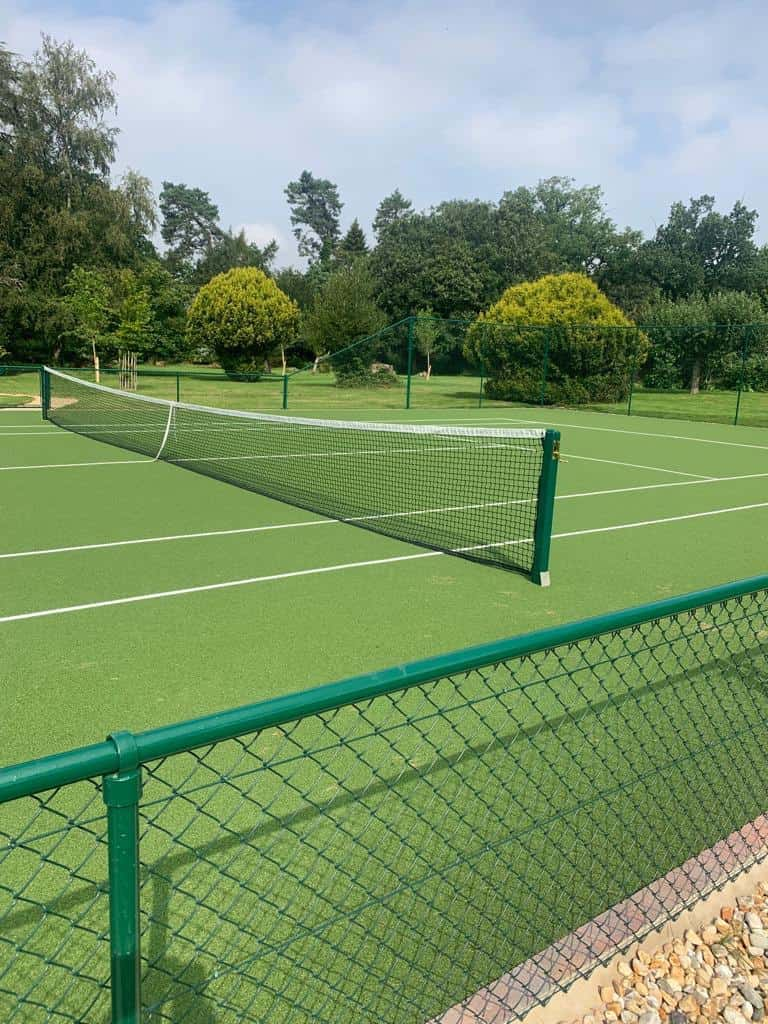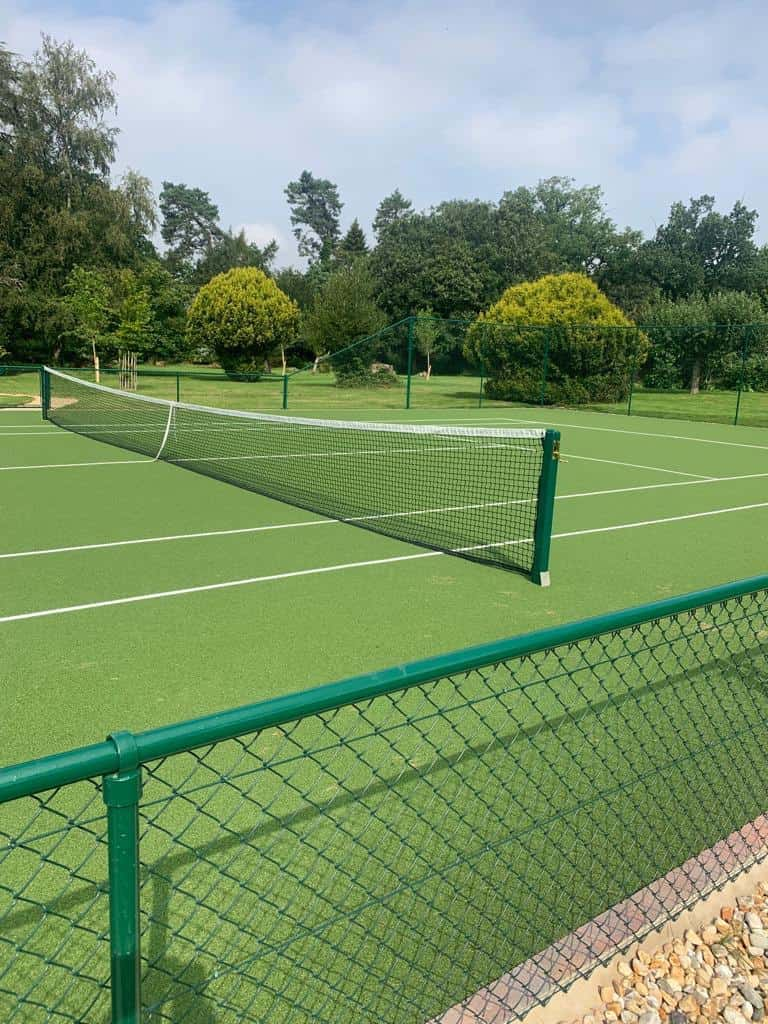A well-maintained tennis court is crucial for providing a smooth playing experience and ensuring the safety of players. However, over time, even the best-built courts can develop cracks due to weather conditions, regular use, and the natural shifting of the ground. Knowing how to address these issues promptly can prevent further damage and prolong the life of your tennis court. At Tennis Court Construction Essex, we understand the intricacies involved in repairing tennis court surfaces, ensuring that courts across Essex stay in top condition. Here’s a professional guide on how to repair cracks in your tennis court surface.
Why Do Tennis Courts Develop Cracks?
Cracks in tennis court surfaces are usually the result of a combination of factors:
- Temperature Fluctuations: In areas like Essex, where temperatures can vary significantly between seasons, the constant expansion and contraction of the surface material can lead to cracks. During colder months, the surface contracts, and in warmer weather, it expands, causing stress on the court.
- Moisture: Water infiltration into the court’s base can weaken its structure over time. When moisture gets under the surface, it can freeze and expand in cold weather, leading to the formation of cracks.
- Heavy Use: Frequent use of a tennis court can cause wear and tear on the surface. High-impact movements, combined with the pressure from running and pivoting, can contribute to the gradual breakdown of the surface material.
- Ground Movement: The shifting of soil or ground beneath the court can cause structural issues that manifest as cracks on the surface. This is especially common in areas with expansive clay soils or where the ground tends to settle unevenly.
Step-by-Step Guide to Repairing Tennis Court Cracks
While some minor surface issues can be addressed with DIY methods, larger cracks or structural damage should always be handled by professionals to ensure the integrity of the court. Here’s a step-by-step guide for dealing with cracks:
- Inspect the Cracks: Start by assessing the extent of the cracks. Measure their length, width, and depth. Hairline cracks (under 1/8 inch wide) can often be treated with simple resurfacing techniques, while larger cracks will require more in-depth repair.
- Clean the Affected Area: Before applying any repair products, clean the cracks thoroughly. Remove any debris, dirt, and vegetation using a brush or a pressure washer. A clean surface allows repair materials to bond better and ensures a longer-lasting fix.
- Use a Crack Filler: For smaller cracks, use a specialised tennis court crack filler. These products are designed to fill and seal the cracks, preventing water from infiltrating the surface. Apply the filler using a trowel or squeegee, ensuring that the product is spread evenly and fills the entire crack. Follow the manufacturer’s instructions for drying time.
- For Larger Cracks: Use a Patch Binder System: Larger cracks may require a patch binder system. This involves filling the crack with a combination of asphalt emulsion and sand, which provides a more durable repair. After applying the mixture, smooth it out to ensure an even surface. Once the patch has dried, apply an acrylic resurfacer over the repaired area.
- Resurface the Court: After the cracks have been filled and the repairs have dried, it’s often necessary to apply an acrylic resurfacer over the entire court. This process helps to restore the court’s smooth finish and ensures that repaired areas blend seamlessly with the rest of the surface. A resurfacer also adds a layer of protection against future damage.
- Repaint and Re-Line: Once the resurfacer has cured, repaint the court and reapply the lines using high-quality, non-slip paint. This step is essential for maintaining the aesthetic appeal and functionality of the court, ensuring that it remains a safe and enjoyable playing surface.
When to Call a Professional
While some minor cracks can be repaired by diligent court owners, significant issues require the expertise of a professional. Here are situations where professional assistance is necessary:
- Structural Cracks: If the cracks are deep or appear to be widening over time, they may indicate underlying structural issues with the court’s foundation. A professional assessment can identify the root cause and recommend a suitable solution.
- Extensive Cracking: When multiple cracks appear across the court, it may be time to consider a complete resurfacing or even a partial rebuild. Professionals can determine whether a repair or a more extensive restoration is needed to maintain the court’s integrity.
- Recurrent Issues: If cracks keep reappearing despite regular repairs, it suggests a deeper issue with the court’s construction or drainage system. A professional inspection can provide insights into how to address the problem permanently.
At Tennis Court Construction Essex, we offer comprehensive tennis court repair services, ensuring that your court remains in top playing condition. Our team has the expertise to handle everything from minor repairs to full-scale resurfacing, giving you peace of mind that your investment is protected.
Conclusion: Keep Your Tennis Court in Top Condition
Regular maintenance and timely repairs are essential for extending the lifespan of your tennis court and ensuring a safe, smooth playing surface. Whether you’re dealing with minor hairline cracks or more significant structural issues, addressing problems early can save time and money in the long run. At Tennis Court Construction Essex, we are committed to providing high-quality repair services for tennis courts throughout Essex, helping you maintain a professional-standard playing surface.
Call us on: 01245 945 895
Click here to find out more about Tennis Court Construction Essex
Click here to complete our contact form and see how we can help with your tennis court needs.



